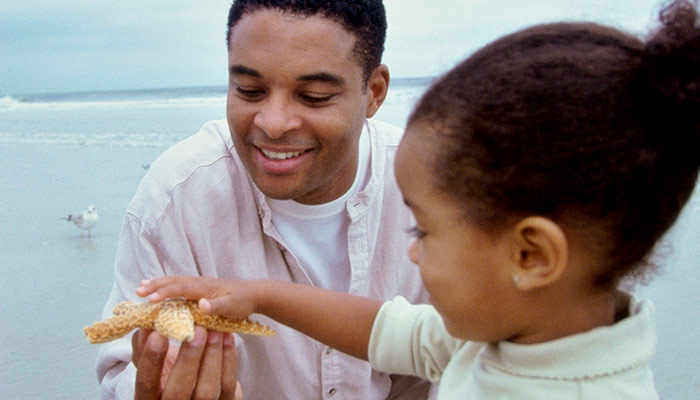While we believe that the books and resources recommended may be of value to you, keep in mind that these are suggestions only and you must do your own due diligence to determine whether the materials are appropriate and suitable for your use. PNC has no sponsorship or endorsement agreement with the authors or publishers of the materials listed.
HABITATS

Ocean in a Bottle
Children will learn about the ocean as a habitat and recreate ocean waves.

Lesson Objective
Children will learn about the movement of the ocean by using a variety of materials to recreate ocean waves to explore the ocean habitat.
(Science) Science(Art) Art
What You'll Need
- 16 ounce plastic water bottles – one for each child
- Blue food coloring – 2 bottles
- Baby oil or vegetable oil – ½ cup for each child
- Measuring cup with spout
- Funnel
- Tiny shells – a handful for each child
- Sparkles
- Glitter
- Hot glue gun (for adult use only)
- Thin tip permanent marker
- Water
What To Do
- Write each child’s name on the lid of their bottle with the permanent marker.
- Using the funnel and measuring cup, help each of the children fill their bottle two-thirds full of water.
- Let each child add a few drops of the food coloring to the water in their bottle.
- Provide the children with the assorted shells, glitter, or other sea-related trinkets. Show them how to put the items into the bottle.
- Using the measuring cup and funnel again, help the children add some oil to their bottles (filling the bottle to within about one-half inch of the rim).
- Glue the bottles shut with the hot glue gun and let cool.
- When the bottles are cool, give them back to the children. Tell the class that, if they tip the bottle, it will look like rolling ocean waves.
Resources
Home School Resources
Home educators: use these printable lesson PDFs to teach this lesson to your home schoolers. They're available in English and Spanish.
Content Provided By
Common Core State Standards Initiative – These lessons are aligned with the Common Core State Standards ("CCSS"). The CCSS provide a consistent, clear understanding of the concepts and skills children are expected to learn and guide teachers to provide their students with opportunities to gain these important skills and foundational knowledge [1]. (External) Visit the CCSS


